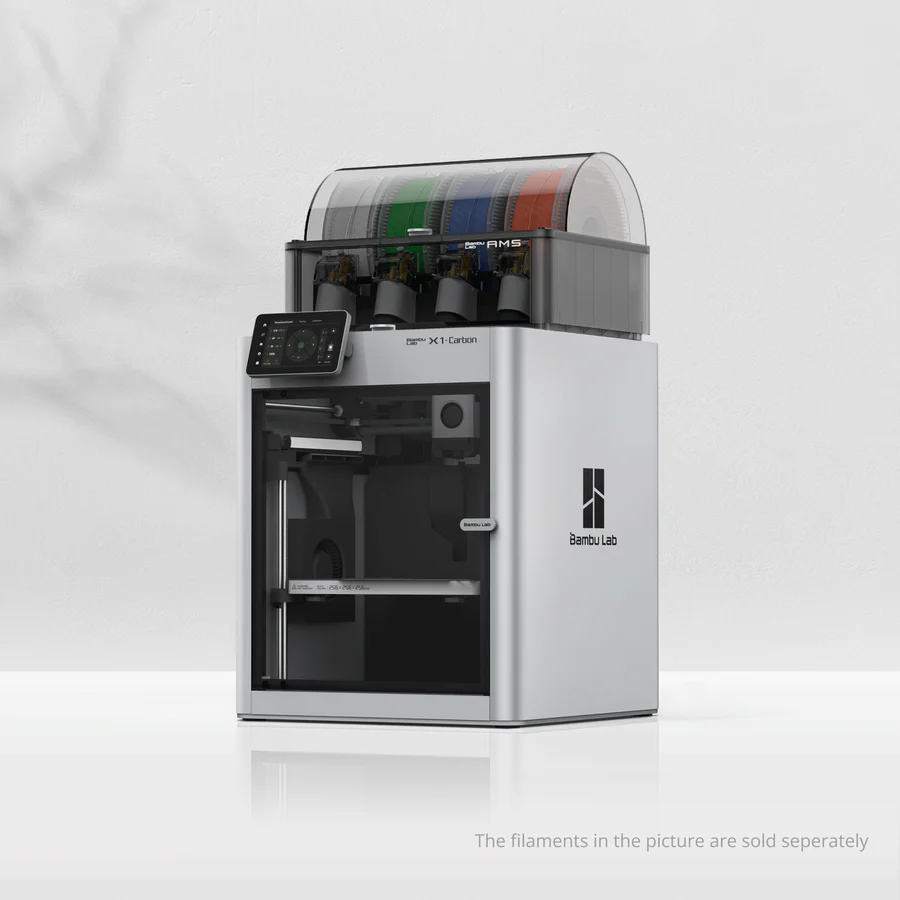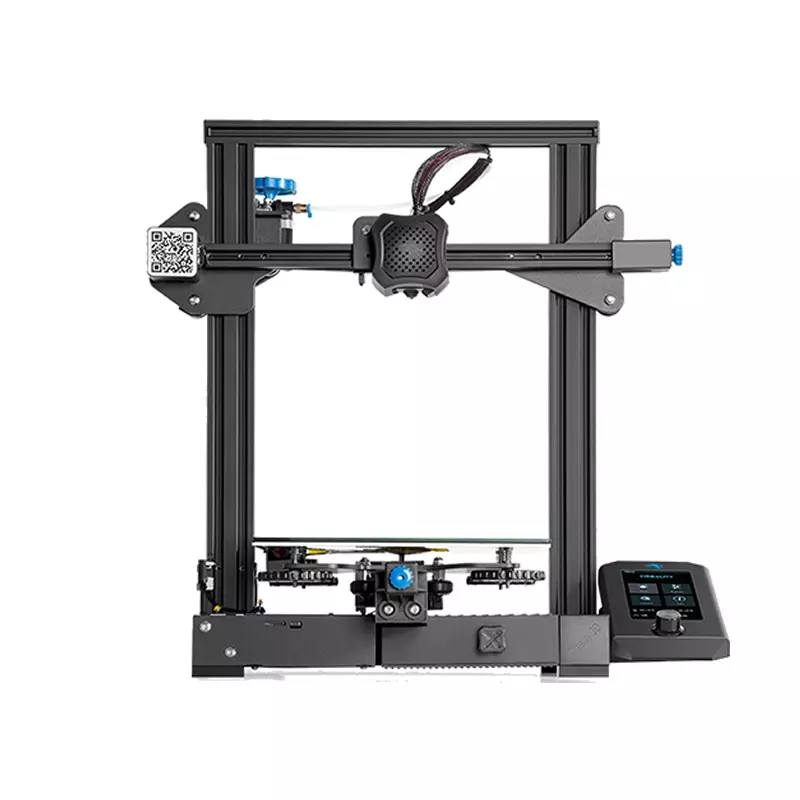Compare X1 carbon vs Ender 3 V2
Comparison between the best 3D printers
Choose the best 3D printer at the best price. The cheapest 3D printers are here.
Buy a 3D printer here with 3D Fila.
 |
 |
|
| Model | X1 carbon |
Ender 3 V2[BUY Ender 3 V2] |
| Printing Material | Filament | Filament |
| Buy Filament for Bambu Lab X1 carbon | Buy Filament forCreality 3D Ender 3 V2 | |
| Estimated price | $1449,00 | $289,00 |
| Manufacturer | Bambu Lab | Creality 3D |
| Release Year | 2023 | 2022 |
| Print Volume [mm] | 256x256x256 | 220x220x250 |
| Printer Size [mm] | 389x389x457 | 470x475x620 |
| Weight [kg] | 14,13 | 7,8 |
| Power Loss Recovery | YES | YES |
| Enclosed printer | YES | NO |
| Bed Leveling | Automatic | Manual |
| Filament End Sensor | YES | NO |
| Bed type | Heated | Heated |
| Power supply system | Direct Drive | Bowden |
| Standard nozzle | 0,4 | 0,4 |
| Maximum Nozzle Temperature [°C] | 300 | 255 |
| Maximum Bed Temperature [°C] | 120 | 100 |
| Maximum printing speed [mm/s] | 500 | 180 |
| Filament holder | YES | YES |
| Camera for supervision | YES | YES |
| Recommended filaments | PLA, PETG, TPU, PVA, PA, PA-CF, Nylon, PC | PLA, TPU, ABS, PETG |
| Recommended slicers | Bambu Studio, Super Slicer, Cura, Prusa Slicer, Orca | Cura, Simplify, Slic3r |
| Maximum Resolution [mm] | 0,1 | 0,1 |
| Processor | Quad ARM A7 1.2 GHz | 32 bits |
| Display | Touchscreen 5'' | Touchscreen TFT 4,3'' |
| Power Supply | 350 W | 24V / 360W |
| Connectivity | Wifi, Bambu bus, Cartão SD | SD / USB |
| Operating systems | Windows, Linux, Macbook | Windows, Mac, Linux |
| Date of registration in the system | 2024-04-10 | 2021-04-15 |
| Release date | 2023 | 2022 |
| Extra features | The Bambu Lab X1 Carbon revolutionizes 3D printing with stunning design, high print speeds, and a streamlined user experience. It stands out with its CoreXY system, a hotend capable of reaching 300°C, allowing for a wide range of filaments. Its LiDAR-assisted bed leveling system, vibration compensation, and AMS multicolor printing capability raise the industry standard. Print quality is impressive, with the ability to fine-tune for perfection. The X1 Carbon, with its closed build volume, not only promises but also delivers one of the most advanced 3D printing experiences available to consumers. | The Creality Ender-3 V2, with a design inspired by the Prusa i3 series, stands out for its DIY assembly structure. With an area of ??250x250x250mm, it supports a variety of projects. It has a micro-USB port, microSD slot and integrated tool drawer. The tension adjustment adapts to different regions. Its manual print bed leveling process requires attention, but offers an enriching experience. Ideal for 3D printing enthusiasts willing to invest time in assembly and adjustment. |
| Support for multiple colors and materials (AMS and CFS) | YES | NO |
Notes * |
||
| Cost-benefit | 7 / 10 | 7 / 10 |
| Hardware | 6.4 / 10 | 2.1 / 10 |
| Tela | . | . |
| Print volume | 4 / 10 | 3 / 10 |
| Performance | 4 / 10 | 1 / 10 |
| [BUY Ender 3 V2] |
Conclusion |
| In comparing the Bambu Lab X1 Carbon and the Creality Ender 3 V2, several key distinctions emerge that greatly influence their suitability for different users. The X1 Carbon, positioned as a high-end printer, impresses with its advanced features, such as automatic bed leveling, a higher maximum nozzle temperature, and significantly faster printing speeds. Its enclosed design and compatibility with a wider range of materials also enhance its versatility, making it ideal for serious 3D printing enthusiasts and professionals who require precision and efficiency for complex projects. The inclusion of features like a filament end sensor, integrated camera, and a powerful software suite adds to the user experience, albeit at a higher price point. On the other hand, the Ender 3 V2 is more accessible, catering to hobbyists and those new to 3D printing. Its user-friendly nature is reflected in its DIY assembly ethos and manual leveling process, which may appeal to those who enjoy the tinkering aspect of 3D printing. While it offers solid performance for a broader audience, its limitations in speed, print volume, and material compatibility make it less suitable for demanding applications. Ultimately, the choice between these two printers hinges on user priorities: the X1 Carbon excels for those seeking advanced capabilities and speed, while the Ender 3 V2 serves as a dependable and budget-friendly option for enthusiasts eager to explore 3D printing without a steep financial commitment. Each model has its merits, ensuring that users can find a suitable fit based on their specific needs and expectations. |

